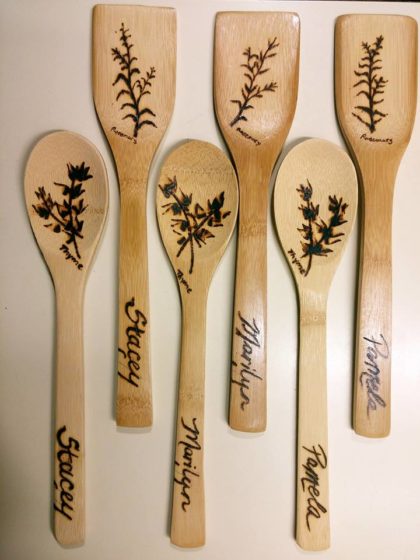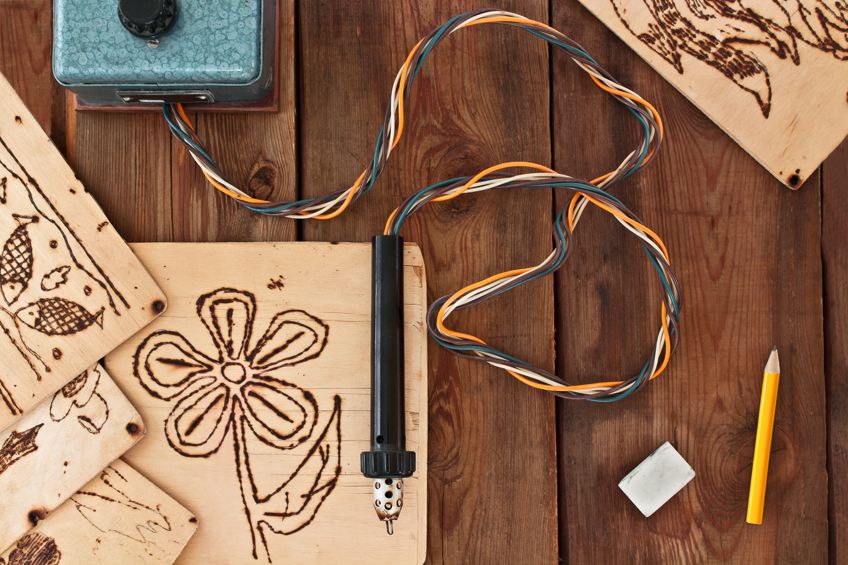
You need to make graphite art. It's crucial to use the correct transfer paper. This article will cover the different types of transfer papers, including Saral paper, graphite paper and colored pencil paper. It will also explain the benefits of each type. Graphite is a great paper choice when creating art, particularly portraits. However, it is important to remember that this type of paper requires special care.
Graphite transfer papers
Graphite-transfer paper is a unique type of paper that features a layer graphite one side. It works much like carbon paper does, and allows you to make copies easily. It's a great way to save your drawings while improving your painting skills. You can also make designs and outlines using graphite transferpaper.
Avoid leaving fingerprints on the transfer sheets when you use a graphite pencil. While this is acceptable for working, it is not ideal when you are storing your work. Keep your graphite-covered paper in pairs. You can store them in a file drawer. Larger sheets should be stored face-to-face. You must ensure proper ventilation. You'll always have the perfect graphite transfer piece.
Transfer paper
Arteza offers graphite transfer papers for transferring your artwork onto canvas. They come in convenient sheets of nine-by-13 inches. These papers make it quick and simple to transfer your designs to canvas. The 60 sheets of professional-grade graphite papier are included in the set. When transferring your design, it is important that you use consistent, even pressure. Your artwork could be damaged by pressing too hard.

Graphite papers can be purchased in many different sizes. They can be used as-is or you can cut them into grids to cover a whole wall. They are made of enough graphite so that they won't smudge and leave a thin mark. To erase any marks that remain after you have transferred your drawing, simply use the kneaded eraser to erase them. The graphite-paper sheets are economical, requiring about $25 for ten sheets.
Saral paper
Saral paper is the first commercially-produced transfer paper. Sara Albertis created Saral paper in 1950. The paper is non-glaring and leaves no marks. Saral papers can be applied to almost any surface including fabric and wood. Saral paper comes in convenient rolls or four-sheet sets. Sheets measure twelve inches wide by three feet long. Saral paper can also be called tracing paper. Here's how it works:
Saral Paper's lighter weight makes them great for transferring patterns or designs from one surface. It is especially useful for graphic designers, and watercolor artists. Graphite papers require consistent pressure and careful handling. Too much pressure can cause it to damage the paper and canvas. Saral's transfers paper is protected by a box. It's best to read the instructions and use them carefully before applying it to your artwork.
Colored pencil transfer papers
When creating color pencil transfers papers on graphite papier, a soft colored pencil works well. The paper is less scratched and the texture is more soft. To remove the grit gently, you can also use a kneaded eraser. The graphite can be cleaned with a damp cloth or a progresso. The basic method is the same for making a detailed drawing.
Graphite, though more durable than other options, does leave a darker mark. Graphite papers cannot be used for professional purposes as they require you to use more pressure in order to remove the marks. They're perfect for classroom demonstrations. Graphite is resistant to dents so it can be used for multiple projects. It is also extremely affordable.
Graphite transfer sheet

Graphite paper transfer sheets are great for transferring drawings and designs from one surface to another. They can be used for stenciling, tole-painting, and other arts and crafts. They are also lightweight and make erasing difficult tasks much easier. If you use them on fabric or paper, however, they can become expensive. It is important to consider several factors before you purchase them.
Different sizes are available for graphite paper transfers sheets. A 20-by-36-inch sheet can be used to trace a large canvas. These sheets can be used without being glued or taped. They will leave a mark on porous surfaces but are not recommended. They are also stronger than graphite and leave clear lines. These sheets are ideal for demonstrations or classroom activities. Graphite paper transfer sheets come in different colors and can be used with a variety of materials.
Transfer sheets for colored pencils
While there are many benefits to using colored pencil transfer sheets, some drawbacks may make them not as suitable for professional-quality works. Heavy lead tends to press harder against the paper so you might need to apply more pressure when transferring lines. The paper may also be damaged if you use too much pressure and white lines may appear. While lighter-colored pencils may be more durable, they can also leave darker lines on your print.
Graphite-like paper is a great alternative for tracing outlines and complex art. These graphite paper-like papers are not waxy and can be used for a variety surfaces including fabric and metal. They are also compatible with stained glass, metal, fine art, and many other surfaces. They are easily stored in small boxes and can be used immediately. Sally's offers a 12-pack graphite-paper sheets for beginners.
FAQ
What woods can be used to make furniture?
Woods are classified according to their hardness. Softwoods include cedar and pine as well as cedar and cedar. Because they are resistant to rot, softwoods are often used as outdoor furniture. You can find hardwoods like oak, maple, mahogany, teak, and others. Because they can't weather outside, they're usually used indoors.
How can I keep my shop organized?
First, make sure you have a designated space for tools storage. Keep your tools away from dust and debris, so they stay sharp and ready to work. You can hang tools and accessories with pegboard hooks.
Is there anything else I should know about woodworking?
Furniture making is a laborious task. It's easy not to appreciate how hard it is. Finding the right type of wood is the most difficult aspect of this process. It is difficult to choose between the various types of wood.
Another issue is that wood does not have the same properties. Wooden can split or crack, while some woods may warp. These factors should be taken into account before buying wood.
What is the average time it takes to finish furniture?
It depends on the wood type you choose, the complexity and the amount you apply to the finished product. For example, hardwoods require more maintenance than softwoods. Hardwoods tend to be more expensive that softwoods. They are more durable and can withstand moisture better. The process of finishing a piece of furniture typically takes anywhere from one week to three months.
What tools should you start with to become a woodworker
Woodworking is an art form that requires patience and practice. It takes time for you to master the different techniques and tools that are required to woodwork.
There are many types of woodworking equipment on the market today. Some prefer power tools while some prefer hand tools.
You have the freedom to choose what tool you want, but it is important that you select the right tool for your job. You might start with a simple set of tools if you don't have much experience.
You could also try learning how to use a router which is used to cut intricate shapes into wood. These are available at most hardware stores.
How much should a hobbyist invest to get started?
If you're looking to start your own woodworking business, you'll probably need some capital to buy the necessary tools and supplies. Start by getting a small circular saw saw, drill press or circular saw. These items are affordable so you won’t break the bank.
How do I know what tools are best suited for me?
It helps to reflect on your needs and preferences before you shop for tools. Do you prefer metal or plastic handles? What size are you most comfortable using for screws and nails? Would you rather use hand tools than power tools?
Statistics
- If your lumber isn't as dry as you would like when you purchase it (over 22% in Glen Huey's opinion…probably over 10-15% in my opinion), then it's a good idea to let it acclimate to your workshop for a couple of weeks. (woodandshop.com)
- In 2014, there were just over 237,000 jobs for all woodworkers, with other wood product manufacturing employing 23 percent; wood kitchen cabinets and countertop manufacturing employing 21 percent. (theartcareerproject.com)
- Overall employment of woodworkers is projected to grow 8 percent from 2020 to 2030, about as fast as the average for all occupations. (bls.gov)
- The U.S. Bureau of Labor Statistics (BLS) estimates that the number of jobs for woodworkers will decline by 4% between 2019 and 2029. (indeed.com)
External Links
How To
How to properly operate a handsaw
Hand saws can be used to cut wood into small pieces. Hand saws come in many forms, including circular saws. A hand saw is a tool made from metal or plastic which cuts material such as wood, plastics, metals, etc.
A hand saw's main benefit is its ability make precise cuts at any angle, without the need to adjust it. It's also much easier to sharpen them than power tools. They do have their disadvantages. They can be very heavy and bulky so it is important to take care when you transport them. Also, if you do not know how to use one, you could easily injure yourself.
There are many ways you can hold a saw. When you are cutting, your hands should be kept away from the blades. If you don't, you might get hurt. You should hold the saw with your fingers close to the handle. Your thumb should be at the top of your blade. This ensures that the blade is not accidentally touched.
It is important to not put anything under the piece you are cutting when using a handheld saw. Doing so could cause the blade's surface to become uneven. Before cutting, always inspect the area. Make sure there are no nails, screws or other objects under the wood.
Always wear safety glasses when you use a handsaw. They prevent dust from getting into your eyes, making it easier to see what you're doing. Safety glasses can also be useful as they protect your skin from flying debris.
Before you start working with a saw, it is important to learn how to use it safely. You can then practice until you are confident enough to cut things. You'll soon be able to cut any item once you have mastered the basics.